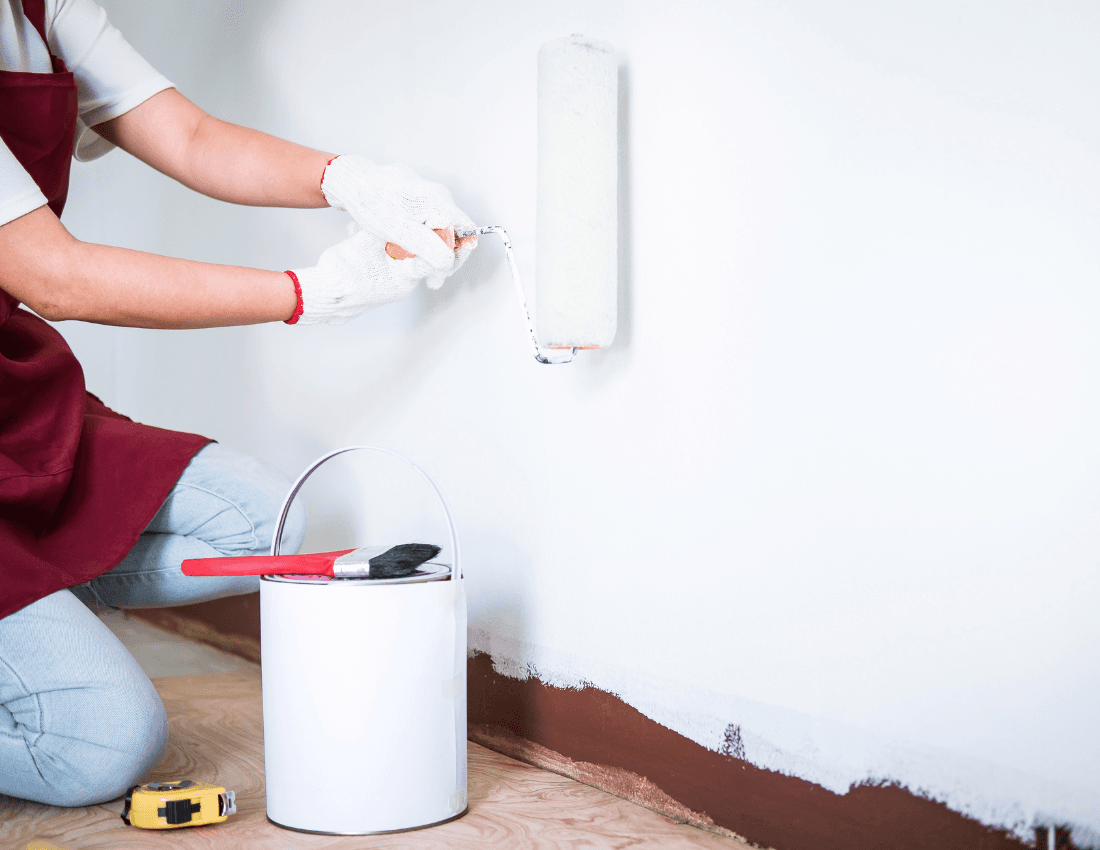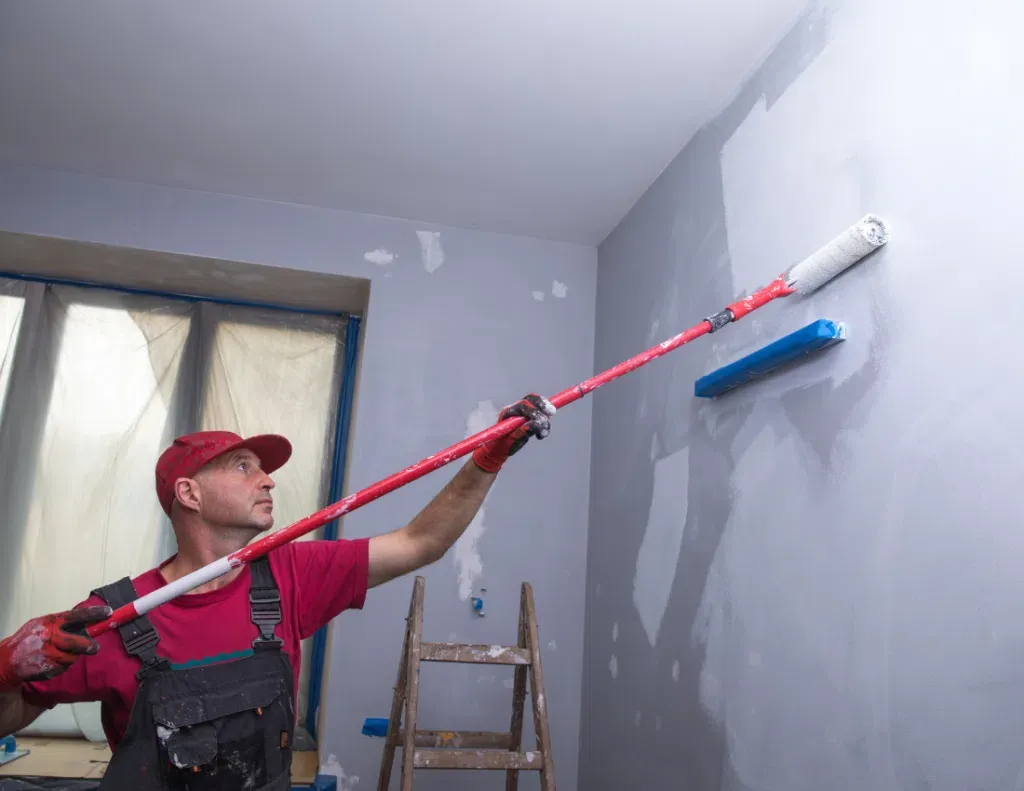Painting Resources for the Greater Atlanta, GA Region
How Many Coats of Primer Do I Need? Roswell, GA Painters Explain What Works Best for Your Walls, Wood, and More

Schedule Your Quote Today!
25% Off
Ends 10/31
By submitting this form, you consent to receive SMS messages and/or emails from our company. To unsubscribe, follow the instructions provided in our communications. Msg & data rates may apply for SMS. Your information is secure and will not be sold to third parties.
You’ve got your paint picked out. You’ve cleared the room. The brush is ready to go. But now you’re staring at the wall wondering—how many coats of primer do I need?
That question comes up more than you might think, especially around Roswell, GA. With the mix of older homes, humid summers, and everything from drywall patches to wood paneling, it’s not always a one-size-fits-all answer.
Some projects are straightforward—prime once and move on. Others? They soak up that first coat like water in a sponge. Then you’re stuck with uneven color, peeling paint, or stains bleeding through. That’s why understanding the surface, what you’re painting over, and the conditions inside the room (or outside) really makes a difference.
In this post, we’ll walk through what actually works for drywall, wood, masonry, metal, and more.We’ll share a few tricks from professional painters who’ve handled everything from freshly sanded furniture to patchy bathroom ceilings.
Key Takeaways:
- How many coats of primer do I need? One coat of primer works if the surface is clean, smooth, and not a drastic color change.
- Two coats are ideal for new drywall, bare wood, or patchy, porous surfaces.
- Use three coats when covering heavy stains, textured ceilings, or rough masonry.
- Heat and humidity in Roswell, GA can affect primer dry time and paint adhesion.
- Spot-priming, sanding, and using the right primer type all lead to better long-term results.

Primer Basics: What Really Affects How Many Coats You Need
The short answer? It depends on the surface, the condition it’s in, and what you’re planning to paint over it.
Primer is the glue that helps your paint stick and the shield that keeps old stains or color from bleeding through. Whether you’re working with plaster, raw wood, or a patched drywall section, primer does a lot of heavy lifting.
Here are the biggest factors that affect how many coats of primer you’ll need:
- Porosity: Drywall, masonry, and raw wood absorb paint like crazy.
- Stains: Water spots, mildew, and smoke damage can show through if not sealed.
- Surface repairs: Joint compound, patched holes, or sanded spots often need spot priming or more coverage.
- Color change: Going from dark blue to white? Two coats will help avoid uneven color.
- Finish underneath: Latex paint over oil paint without a proper primer? It’s going to peel.
- Roswell’s humidity and heat: These mess with dry times and adhesion, especially in rooms with poor ventilation.
Surface-By-Surface: How Many Coats of Primer You Actually Need
Let’s break it down. Here’s how many coats of primer usually work best depending on your house painting project, material, and why.
Drywall (Especially New or Repaired)
New drywall and fresh joint compound are porous. That means one coat of primer will disappear fast. Even on previously painted drywall, patched spots can absorb differently and leave a blotchy finish.
Rule of thumb:
- New drywall: 2 coats
- Previously painted walls with minor repairs: 1 coat, but spot prime the patched areas
For smooth, even paint coverage and stronger adhesion, going with two coats is usually the smart move, especially if you’re using latex paint over a patched wall in a high-traffic room.
Bare or Stained Wood
Bare wood is like a sponge. It absorbs primer, especially along the grain or around knots. If you’re working with furniture, trim, or window sills, a second coat will help seal the surface and keep paint from soaking unevenly.
Recommended:
- Raw wood: 2 coats minimum
- Wood with knots or stains: Use a stain-blocking primer
- Smooth finished wood (cabinetry, trim): 1–2 coats, depending on adhesion
And don’t skip prep. Sandpaper is your friend. A light sand before and between coats helps smooth out grain, reduce dust, and improve adhesion.
Masonry, Plaster, and Concrete
Rough, porous, and often dusty—masonry surfaces like concrete walls or old brick need more attention. A single coat of primer might vanish right into the surface, especially if the area has high porosity or previous mold damage.
Ideal approach:
- Block wall or concrete: 2 coats
- Plaster with patchwork or previous damage: Up to 3 coats
- Basement walls: Use mold-resistant primer if moisture is present
In older Roswell homes, you might find plaster hiding under old wallpaper or lead-based paint. In those cases, more coats are better than less.
Ceilings (Especially Textured or Stained)
Ceilings are tricky. Popcorn texture, stains from mildew or leaks, or old smoke damage can bleed through paint fast. Even a clean ceiling may need two coats to avoid uneven coverage—especially under bright light.
Use case:
- Popcorn or textured ceilings: 2–3 coats
- Flat ceilings with stains: 2 coats minimum with stain-blocking primer
If you’re dealing with ceiling spots from water or heat damage in a bathroom or kitchen, one coat won’t cut it.
Previously Painted Surfaces
If the surface is in good shape—no stains, smooth finish, not a dramatic color switch—you can usually get away with a single coat of primer. Just make sure the surface is clean, dry, and grease-free.
- Same color family: 1 coat
- Dramatic color change: 2 coats
- Old oil paint being painted with latex: Always prime
Need help deciding whether you’re dealing with latex or oil paint? Read our guide on different types of interior paint.
Humidity, Heat, and Dry Time
Let’s talk about how the heat affects your primer. Roswell summers get sticky. That humidity speeds up drywall absorption and messes with how primer settles.
What that means for you:
- Primer may feel dry to the touch but not fully cured underneath
- Rushing to paint too soon? You might lose adhesion
- Dry time stretches in damp basements or poorly ventilated bathrooms
- Avoid priming when walls are hot to the touch, especially exterior masonry or metal
A lot of professional painters in Roswell, GA recommend starting in the morning or waiting until the sun is lower, especially for exteriors. Let your coats dry completely before moving on. Don’t guess—check the label.
When Three Coats Are Worth the Extra Work
Yes, sometimes two isn’t enough.
Go for three if:
- The surface is extremely porous (like raw brick, wood, or patched plaster)
- You’re dealing with heavy staining or mold
- You’re doing a major color shift
- The surface has uneven texture or patchwork
Think of that third coat as your insurance. It builds a stronger base, avoids blotchy paint, and gives your finish coat something solid to grip.
Not sure if your wall needs more primer or just a better color plan? You might like this: How to match wall paint colors without repainting
Quick Advice From Professional Painters in Roswell, GA
We asked a few local pros what they always keep in mind. Here’s what they said:
- Always sand between coats if the surface feels gritty
- Spot-prime patched areas instead of starting from scratch
- Clean thoroughly—don’t trap dust, grease, or mildew
- Use the right primer—latex, oil, and specialty primers are not interchangeable
- Don’t rush dry time, especially in humid areas like basements or bathrooms
Want to make sure your walls look right the first time? Here’s another great resource: How many coats of paint do your walls really need
Final Thoughts: How Many Coats of Primer Do I Need in Roswell, GA?
It all comes down to what you’re working with. If your surface is clean, dry, and already painted, one coat of primer can do the job. But if you’re painting new drywall, patchy plaster, bare wood, or making a bold color change, two coats are usually smarter. When you’re working on rough masonry, textured ceilings, or areas with stains, go for three.
With the heat, humidity, and variety of surfaces in Roswell homes, it’s better to take your time with prep. A good primer job means fewer paint problems down the road.
Here’s how Sharper Impressions Atlanta makes it easy from start to finish:
- Free color consultations so you get the right look
- Surface prep including pressure washing, sanding, and patching
- High-quality primers for everything from wood trim to bathroom ceilings
- Careful, clean application—no mess, no shortcuts
- Our experienced painters who know how to work with heat, humidity, and old surfaces
Serving Alpharetta, Acworth, GA, and the surrounding areas, we’re here to help you get the prep right—so your paint lasts longer. Call us at 770-447-0967 for your FREE estimate today!
Primer FAQs
How do I know if I need a second coat of primer?
Does primer have to be perfect?
Can I paint over primer the same day?
Should I sand after primer?
March 28, 2025
About the Author: Joseph Steele
Hi, I’m Joseph Steele, with Sharper Impressions Painting. We proudly offer high-quality interior and exterior painting services for homes and businesses in Atlanta, Columbus, Orlando, Indianapolis, Kansas City, and Nashville. From cabinet painting to deck and fence staining, we’re here to enhance your space. Learn more about us here.
See what others have to say
Above All, Our Customers Come First…
Sharper Impressions Painting is a painting contractor with over 32 years of residential painting experience along with an impressive reference list from satisfied customers. Your home is your most valuable asset and our respectful painting team will make it look great and keep it protected for a long time.
Our Locations

